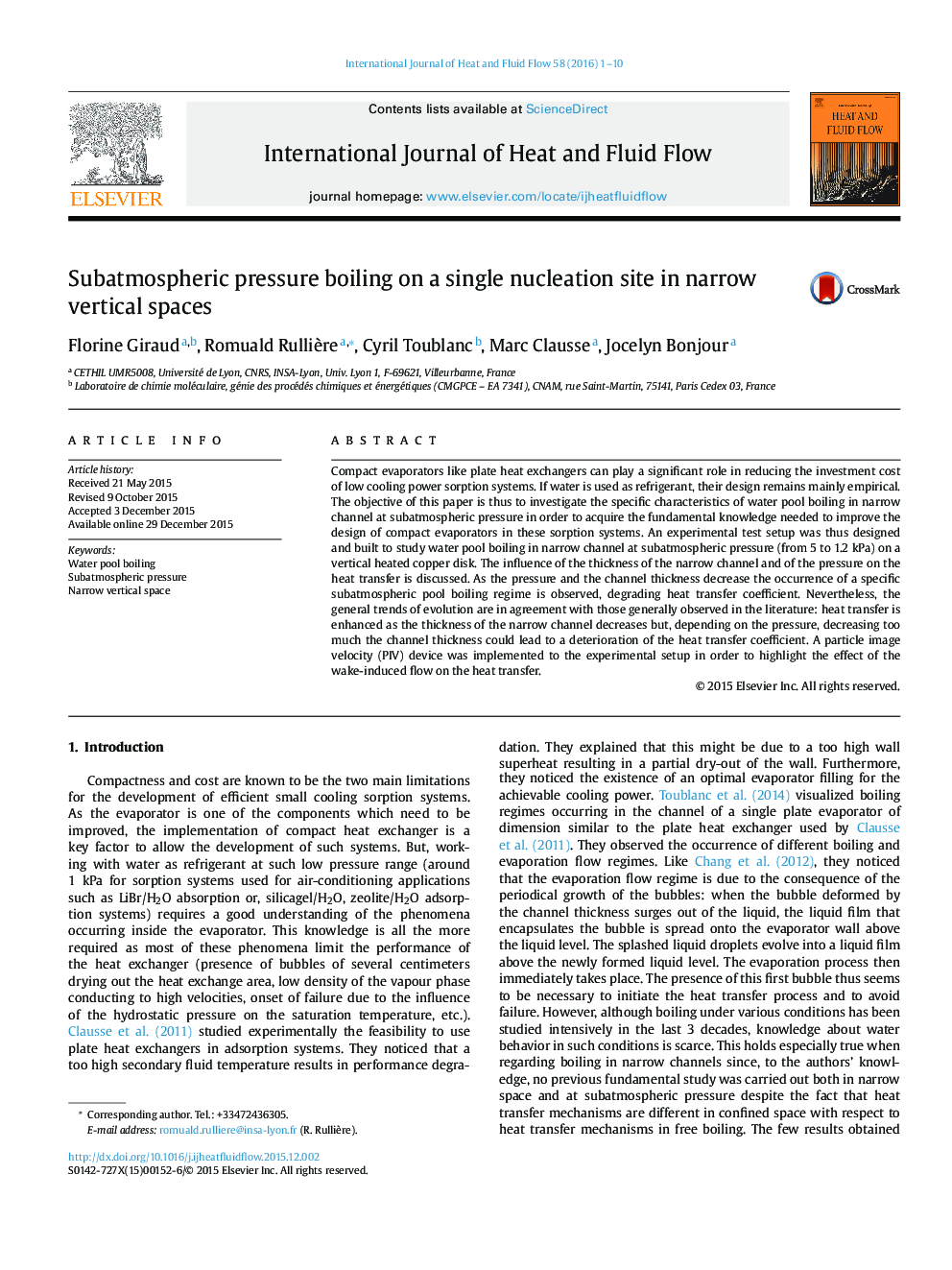| Article ID | Journal | Published Year | Pages | File Type |
|---|---|---|---|---|
| 655051 | International Journal of Heat and Fluid Flow | 2016 | 10 Pages |
•Experimental set-up for subatmospheric pool boiling characterization was built.•Instantaneous boiling curves were plotted for pressure range of 1.2–5 kPa.•Influence of the thickness of the channel on boiling curves was studied.•A regime specific to subatmospheric pool boiling was observed.•A PIV device was implemented.
Compact evaporators like plate heat exchangers can play a significant role in reducing the investment cost of low cooling power sorption systems. If water is used as refrigerant, their design remains mainly empirical. The objective of this paper is thus to investigate the specific characteristics of water pool boiling in narrow channel at subatmospheric pressure in order to acquire the fundamental knowledge needed to improve the design of compact evaporators in these sorption systems. An experimental test setup was thus designed and built to study water pool boiling in narrow channel at subatmospheric pressure (from 5 to 1.2 kPa) on a vertical heated copper disk. The influence of the thickness of the narrow channel and of the pressure on the heat transfer is discussed. As the pressure and the channel thickness decrease the occurrence of a specific subatmospheric pool boiling regime is observed, degrading heat transfer coefficient. Nevertheless, the general trends of evolution are in agreement with those generally observed in the literature: heat transfer is enhanced as the thickness of the narrow channel decreases but, depending on the pressure, decreasing too much the channel thickness could lead to a deterioration of the heat transfer coefficient. A particle image velocity (PIV) device was implemented to the experimental setup in order to highlight the effect of the wake-induced flow on the heat transfer.
